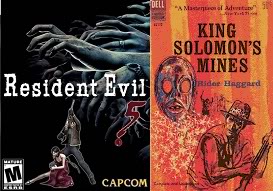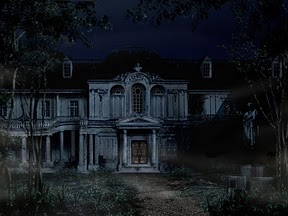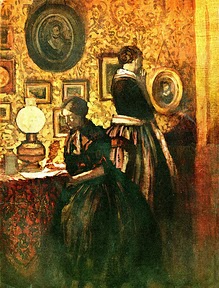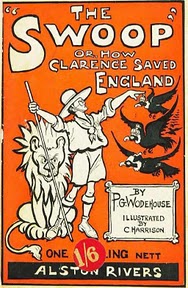This post has not been edited by the GamesBeat staff. Opinions by GamesBeat community writers do not necessarily reflect those of the staff.
Like many gamers, I first discovered survival horror through Resident Evil. While growing up, I was a Nintendo fanboy. I didn't get to play the series until the GameCube remake, but it still changed the way I look at games. As a cautious gamer, I was thrilled to finally discover a title that rewarded my play style but still challenged me. Since then, I've slowly worked my way through most of the series (though I only just played and beat Resident Evil 2 via PSN download last month) while acknowledging but shrugging off most of the criticisms concerning the game mechanics and stories.
I've also earned three degrees in literature. It's the job of the literary academic to place a work within the greater context of its time and its culture — or even within other times and cultures. I've made Victorian literature one of my areas of research, and I've started to connect some of it to one my favorite video-game series.

This area of interest began while I was first playing Resident Evil 5 in 2009. As I played it, I was struck with the number of plot similarities between it and Sir H. Rider Haggard's King Solomon's Mines — one of my favorite novels. Haggard epitomizes one of the most popular late 19th century British literary genres — the adventure story for boys. Many of its characteristics are found in Resident Evil 5 (and even Resident Evil 4): travel to a distant land, horrific events, exotic women, and treasure of some kind, all found on the route to "manhood."
But Resident Evil 5 and King Solomon's Mines also share more than similar plots; at one point or another, both faced accusations of racism. I've written on this before, both online and for a conference, so I don't want to turn this into an academic presentation or a class lecture (if interested, here's a link to the Flash presentation on the topic that I made for my literature class).
But the adventure story for boys was just one popular genre of Victorian literature. Others included the suspense, the invasion-scare story, and the Gothic novel. The bulk of the Resident Evil series embodies each of these at some time or another.

For starters, anyone who's at least played the original Resident Evil in any of its incarnations can attest to the Gothic feel of the mansion — the game's chief setting. And many of the games in the early chronology use exactly the same style — ornate tapestries, grim period art, gas-lantern-level lighting, brass key security, etc. It screams of late-19th century Gothic aesthetics, and the designers clearly had them in mind. For an even more over-the-top example, look at Resident Evil 0's Ecliptic Express. Have you ever ridden Amtrak? I have. It's nothing like that. Resident Evil 4 even partially takes place in a European castle. And Resident Evil 2's secretary journals even peak over the fourth wall when she writes about not understanding the police chiefs' obsession with renaissance-like art that he displays around the station.

Journaling is another Victorian story-telling influence. While it pops up less and less as the series goes on, Resident Evil was a pioneer in using journal-like narration to progress a game's story — we see its descendants in Dead Space and BioShock's audio logs. But this method for quick advancement of plot via a non-main character's point of view was an oft used device in Victorian literature. Frankenstein begins with a series of letters between characters; She: A History of Adventure features maps and journals of warning found along the way; in fact, many novels had a first-person, journal-like telling of the story — King Solomon's Mines, most of the Sherlock Holmes stories, Jane Eyre, etc.
In all of these examples, the journals are meant to add a sense of mystery or suspense to the story, and this, too, was another key feature of Victorian literature — from Sherlock Holmes' hunt for Professor Moriarty to Jane Eyre's curiosity concerning the woman locked in Mr. Rochester's attic. The Resident Evil series uses mystery and suspense to propel its plots. While survival is the goal of each game, trying to simply find out what's going on is often what keeps us playing. Think of the first time you discovered the secret, modern lab beneath that Gothic mansion. Sure, it was creepy, and mostly definitely full of zombies, but what's it doing there? The series plays with this on a much smaller scale too, with its ridiculous puzzles — really, a safe couldn't be just as useful as a knight statue with a whirling blade of death? The journals would often enter here too, offering clues and pass codes. Of course, these are simply similar features and plot devices. To get to the real meat of comparison, one has to look at the Victorian genres that Resident Evil most emulates.
 To really put Victorian literature into context, one has to consider the state of the nation producing it. The British Empire was at its peak. It was so large that, even a century later, we're still familiar with the phrase, "The sun never sets on the British Empire." It's little wonder then that the most sensational titles of the day were those that featured threats on the empire, with such telling titles as The Battle of Dorking, The Seizure of the Channel Tunnel, The Taking of Dover, The Sack of London in the Great French War of 1901, and The Decline and Fall of the British Empire. But the genre could not be better captured than by the plot of the parody The Swoop…A Tale of the Great Invasion, in which Britain is simultaneously invaded by Germany, Russia, China, Turkey, Switzerland, Morocco, cannibals of indistinct origin, and the Prince of Monaco, among others. Luckily, patriotic Boy Scout Clarence Chugwater is there to save the day — here again we see the adventure story for boys.
To really put Victorian literature into context, one has to consider the state of the nation producing it. The British Empire was at its peak. It was so large that, even a century later, we're still familiar with the phrase, "The sun never sets on the British Empire." It's little wonder then that the most sensational titles of the day were those that featured threats on the empire, with such telling titles as The Battle of Dorking, The Seizure of the Channel Tunnel, The Taking of Dover, The Sack of London in the Great French War of 1901, and The Decline and Fall of the British Empire. But the genre could not be better captured than by the plot of the parody The Swoop…A Tale of the Great Invasion, in which Britain is simultaneously invaded by Germany, Russia, China, Turkey, Switzerland, Morocco, cannibals of indistinct origin, and the Prince of Monaco, among others. Luckily, patriotic Boy Scout Clarence Chugwater is there to save the day — here again we see the adventure story for boys.
But the invasion-scare story was not made up of only military coups against the Empire. Late Imperial Britain was also into studies of the occult and science. Hence, a number of other scare stories were being churned out — these perhaps were better known than their military counterparts. Bram Stoker’s Dracula focused on the invasion of the individual — the slow but steady demonic possession of the empire. Dracula, as villains are ought to do, monologues about his race’s right to the power flowing their veins. This sounds very much like the smarmy speeches Wesker delivers when he wants to put down Chris as he Matrix-dodges his bullets and tosses him around like he isn't the size of a fridge. Dracula is also, arguably, the most famous story of the undead, rivaled only by Frankenstein's monster. Only Frankenstein's monster couldn't transmit his undead state as Dracula and all vampires can. And it's undeniable that the modern zombie mythos has derived from this. The Resident Evil zombie then also represents the invasion from within through the transmission of the T-virus.

Of course, the most famous novel of the invasion-scare genre is H.G. Wells’ The War of the Worlds. The Empire is invaded by Martians launched at Britain in enormous shells. Capable of building any machine their cumbersome bodies require — be they flying machines, spider-like contraptions for catching humans, or their favored, tall tripods — the invaders quickly exact vengeance for all those people colonized by the British. Indeed, what could be more fitting the crimes of building an empire on the ash of other civilizations than having one’s own civilization colonized? The British rifle and cannon used to create the Empire were useless against the Martian's heat ray, choking black smoke, and taste for human blood! Wells’ took the ideal of British colonization, turned it against the British, and then did one better. The British never ate the people they conquered. In fact, the popular image of the peoples being “saved” by British dominion was that these “savages” were cannibals, no more than beasts who ate men. Now these man-eating beasts were invading the Empire. Similarly, Resident Evil's man-eaters slowly took over Raccoon City.
Really, the Resident Evil series runs with both these kinds of invasion. The invasion from within is biological, in the contamination that turns its human hosts into zombies while also transforming other creatures into powerful progenitors of themselves. And the invasion is national: When the zombie infestation threatens America, Raccoon City is nuked; the Los Illuminados kidnap the president's daughter to infect her and, in turn, the leader of a powerful nation; Wesker intends to use Uroboros to destroy all but a loyal population of evolved humans. The symbolism exists here too, with capitalist America brought to its knees time and again — not by other nations but by corporations. Resident Evil 5 is especially poignant on this point with its Tricell corporation performing experiments on Africans because it's not illegal — something not based in fiction. Only this time, the result of these experiments is nearly the apocalypse.
It's hard to ignore these similarities. It's even (perhaps coincidently) in the title, Resident Evil: evil that resides within. And it's equally hard to think that they exist coincidently. Regardless, Resident Evil harkens back to tried and true genres of compelling storytelling. And it should be no wonder why the games, as well as the literature they emulate, have remained popular.
Questions? Quibbles? Controversies?
